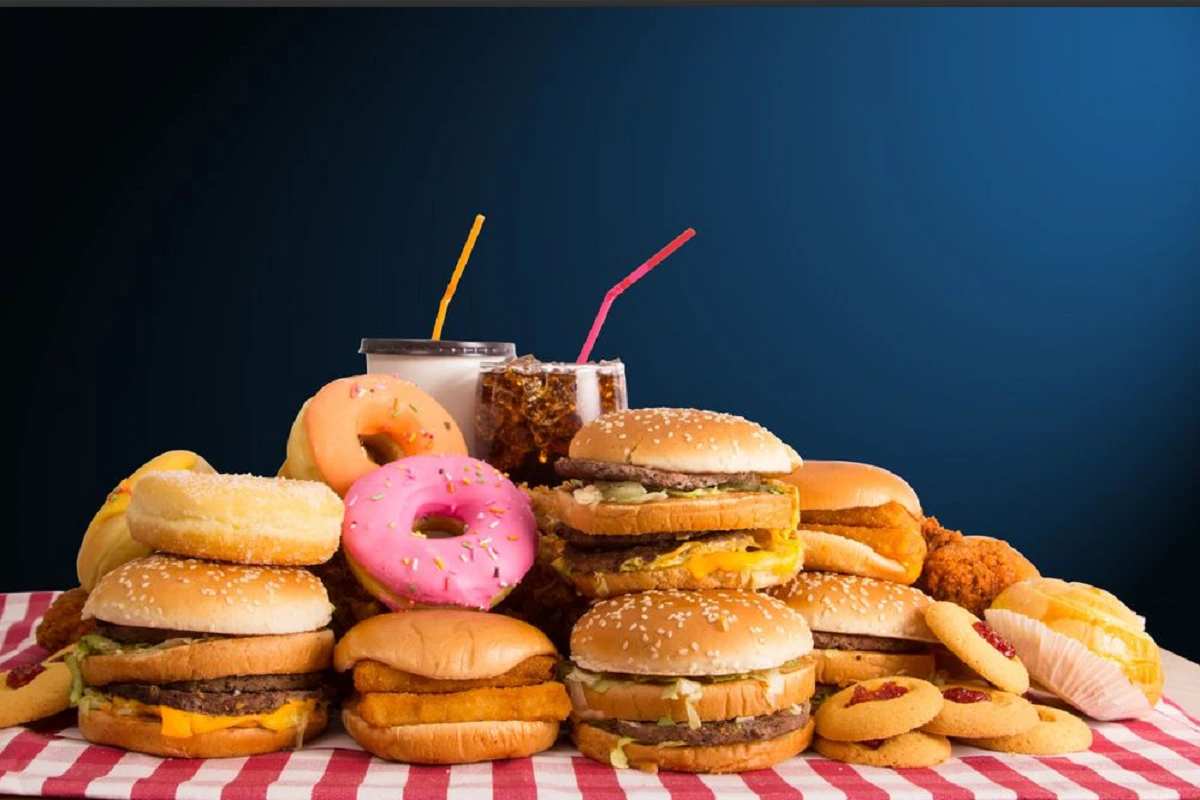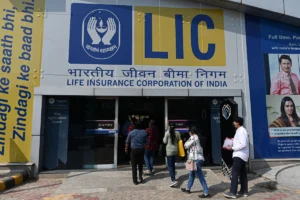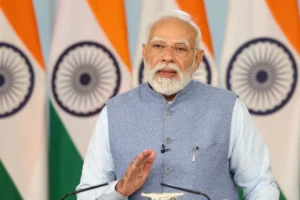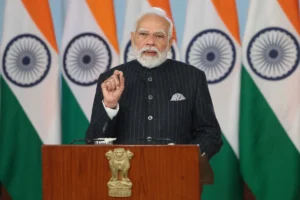

(Ismail Zafar Khan)
Unhealthy Food Practices: India liberated its economy in 1991 and moved towards the Globalisation process. Since then Globalisation has had a deep impact on different aspects of the lifestyle of our society including our Food culture and habits. Indian food culture is becoming westernized, Pre-Processed and packaged foods are gaining popularity against Traditional food.
Traditional Indian food patterns consist of cereals and vegetables, staple diets of Indians are Roti, Rice, Dal, Chatni Pickles, Beans, etc. They contain high amounts of essential nutrients like carbohydrates, Proteins, Vitamins, and fiber. In short Indian traditional Indian foods have more natural ingredients and less processed ingredients. The traditional Indian diet has multiple health benefits, it develops immunity and helps in the healthy functioning of the brain. But today’s younger generation prefers to eat high-calorie, fats, and sugar-dense Junk foods.

As per a study by Lancet Journal every year more than 1.5 million people in India die due to unhealthy diets. An unhealthy diet is resulting in obesity and chronic diseases like high blood pressure, heart disease, diabetes, etc.
Change In Dietary Pattern due to Globalisation
Food is an integral part of Indian Culture, It unites friends and families. According to the prominent environmentalist Sunita Narain
Traditional Indian dietary pattern is ecologically diverse. Every region has its own staple diet that originated from its environment. For example, the Staple diet of West Bengal is Fish and Rice. Bengal is a riverine plain, it produces fish and rice in large quantities. Its climate is not suitable for growing pulses so Bengali people mainly depend on fish for Protein. While in Punjab, Haryana, Northern, Western and Central Indian states people consume items mostly made of wheat. The climate of these regions is most conducive for growing wheat.
Traditional Indian Food patterns emphasize seasonal Food, Seasonal Food is scientifically healthy as it caters to the changing requirements of the human body. In winter people consume dry fruits which keep the body warm and during the summer season, people prefer to consume fruits and green vegetables such as watermelon, litchis, cucumbers, etc which contain 90% water.
But nowadays seasonal foods, vegetables, and fruits like things do not exist as the same foods are available all seasons of the year and people even consume them. Fast Food is replacing traditional Indian Food and the growth of fast food is increasing with an 18% compound annual growth rate.
According to a report by NSSO, the urban population on average spends more on Junk food than fruits and vegetables.
Due to globalization, many giant fast food restaurants like MacDonald’s KFC, PIZZA HUT, etc have gained popularity because it gets ready quickly compared to traditional Indian food. While traditional cooking food takes more time to prepare. Second It is good in taste and cheap in price. After globalization, the disposable income of Indians increased and their lifestyle preferences changed. According to available data in the year 2021 around 45 million people had food in Restaurants and availed of the services of the Food Industry services. Nowadays most urban women are working and due to lack of time, they are dependent on processed food. The consumption of fast food is increasing unhealthy components and at the same time, people are not getting proper nutrients. Fast food contains high amounts of sugar, salt, and saturated and trans fats. That’s why it is considered unhealthy for the human body. According to a report in the Financial Times of the United Kingdom, 60% of products manufactured by Nestle are unhealthy even Nestle accepted the reality later on.
According to WHO- one person has to consume 400 grams of vegetables and fruits daily but unfortunately, according to NSSO across all income groups, the average consumption is less than the required amount.
Dietary Pattern— Obesity and underweight Problem.

According to the National Family Health Survey (NFHS) Data- every one person out of four is overweight. It means 25% of the population is suffering from obesity. The number of obese children in India has increased to 14.4 million, second to China. According to NSSO Data, the problem of obesity is increasing rapidly among the younger generations. The NASSO data also explains that the total obese population in urban areas is 33% and in rural areas, it is 20%. And in the same way, the number of obese people among the lower-income group is 10% and among higher-income groups, it is more than 40%. Needless to say that consumption of fast food is greater in the urban population than in the rural one. The recent arrival of online food services has made fast food even more accessible to today’s affluent, tech-savvy generation. According to medical experts, today 5% of the population of India is morbidly obese. What a dichotomy we come across that the economically marginalized section suffers from malnutrition and the affluent and middle-class sections of India suffer from obesity.
Globalization and later the advent of new technologies took away the jobs of the working class and pushed them towards even greater poverty and created economic disparity as well. A large part of the Indian population today is not able to afford three meals a day. The largest number of the underweight population of the world resides in India. Around 40% of the world’s population belongs to India. This number was about 200 million in the year 2016.
Prevalent chronic illnesses.
Most of the chronic diseases such as liver damage, diabetes, heart strokes, cancers, etc happen due to the consumption of fast foods. We have been witnessing sudden deaths due to heart stroke in society while the diseased persons look fit and healthy and did not have past medical illness records.

According to the world health organization, there are more than three million deaths related to heart disease in India every year, most of which are under 55 years old. The experts say that unhealthy lifestyles and poor diets are responsible for this. High calories fast food does provide energy but it diminishes the immunity of the human body. According to the report of the International Diabetes Federation, today one out of twelve people in India are suffering from diabetes. More than three lakh people die every year due to diabetes and this figure is 75% more than in the decade 1990. Fast foods also affect the mental health of youngsters. It is rightly said that “A healthy mind dwells in a healthy body.” Nutrient-deprived fast food increases anxiety and depression. Fast food contains a large number of saturated fats, Trans fats, and omega-6 fatty acids although it is required to function in the human brain excess of these components negatively affects the brain.
Also Read: HEALTH: Sitting is the new smoking! Remedy?
Ways to reduce the consumption of junk food practices increasing due to globalization.
First of all the government should take steps to stop the increasing fast-food consumption. NITI Aayog in its annual report for 2021-2022 suggested increasing taxes on fast food items. Presently there are 5% GST charges on non-branded packaged food and 12% on branded food.
Second, there must be required restrictions on junk food advertising.
The Ministry of women and Child Development has given its suggestion in this regard that Junk food advertisements especially during children’s programs should be banned. While reducing the consumption of fast food we must emphasize reviving traditional food practices.
Traditional food habits were associated with the environment. The staple diet of each region used to be according to climate change. According to experts, eating other climate-origin food is harmful to our bodies. Government should take steps to increase awareness about traditional Indian food and should introduce nutrition education in the school wherein the children will be taught the health benefits of traditional food and the harmful effects of Junk food.
Government should ponder formulate such policies that Restaurants should be encouraged to include traditional food in their menu and make it more decorative to attract consumers. These are steps to be taken to encourage healthy diet practices at the policy level. We should follow healthy diet practices even at the individual level. We must avoid high-calorie junk food. Parents must encourage their children to consume fruits and green vegetables in large quantities. AS THE SAYING GOES SINCE TIME IMMEMORIAL “HEALTH IS WEALTH”.
To read more such news, download Bharat Express news apps



















